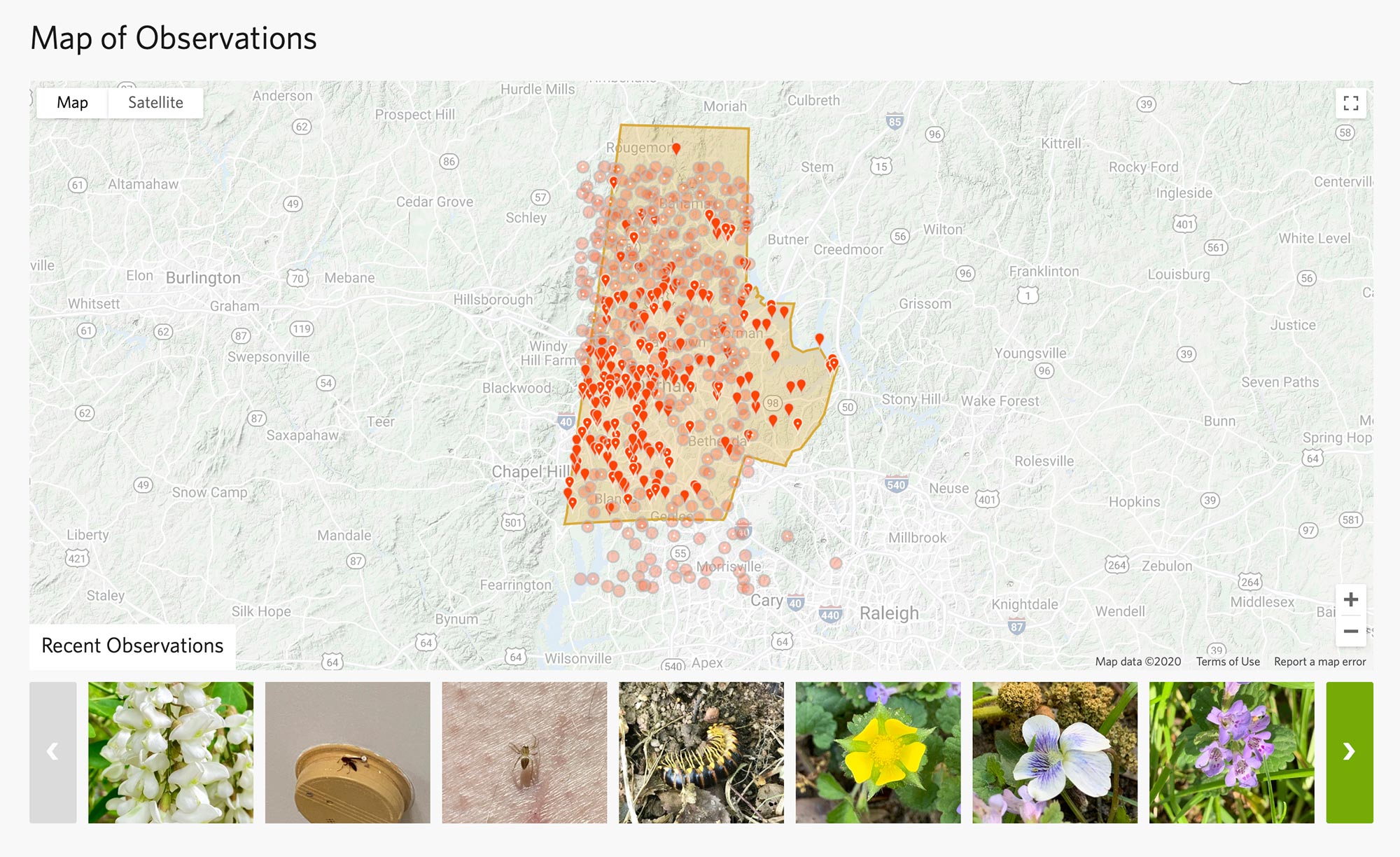Educators Join Forces for County-wide BioBlitz
When pandemic closures in March put a hold on springtime activities everywhere, education program assistant Kati Henderson saw an opportunity to create a community initiative that would be ideal for this era — a Durham-wide online survey of all the different life forms in the county, using the citizen science platform iNaturalist and a weeklong event called a BioBlitz.
“I was looking for a way to help people in our community find some relaxation and connection with nature and each other in this time when we were really figuring out how to live in a drastically new and unexpected way, when so many of the things we were used to doing, or ways of learning and being with each other, weren’t on the table anymore, for everyone’s health and safety,” Henderson said.
“We wanted to highlight that we are part of and connected to the natural world all the time, no matter where we are, even in urban areas or apartment buildings like where I was,” she said. “When you slow down and take some time to look, you notice so many things that are living right there with you. Going outside for a walk and really paying attention to all of the plants and insects and other things around you, or just spending time outdoors surrounded by them, can be really beneficial to your health.”
The BioBlitz offered participants an opportunity to engage while remaining close to home, and it was also inclusive to everyone from hikers to porch dwellers, and from professional scientists to children.
“Going outside for a walk and really paying attention to all of the plants and insects and other things around you, or just spending time outdoors surrounded by them, can be really beneficial to your health.”
“You don’t need to be an expert in identifying any of the things you observe. There’s a whole community of people who work together to do that identification,” Henderson explained. “All you need is a computer or phone with internet access and a digital camera — and the curiosity to look and see what’s around you.”
On March 30, the first-ever Durham-Wide Bioblitz kicked off, with hundreds of sightings posted on the first day alone. In addition to working on their own, participants could also join webinars co-hosted by Duke Gardens, the Piedmont Wildlife Center and the Museum of Life and Science on natural history-related topics like reptiles, birding and phenology.

Two weeks later, 321 observers had reported 800 species identified by 453 volunteers — some by local residents, others by experts in their field across the country — for a grand total of 2,973 observations.
Wandering eastern tent caterpillars (Malacosoma americana) and bright-red northern cardinals (Cardinalis cardinalis) dominated the list. But the top spot went to lesser celandine (Ficaria verna), an invasive buttercup relative with roots and rhizomes rapidly spreading across the Triangle.
There were also plenty of reports of showy native wildflowers like violet woodsorrel (Oxalis violacea), Atamasco lily (Zephyranthes atamasco), and lyreleaf sage (Salvia lyrata) tucked away in state and city parks, woodland edges, neighborhoods and suburban backyards.
“I was really heartened to see how many people ended up participating,” Henderson said. “It was wonderful to tangibly see all of these other members of the Durham community being together with me in this way, and seeing all of the interesting and unique living things that live across our county.
“I hope participants felt empowered to follow their own interest in their home community and felt some connection through our virtual network,” she said. “We will definitely do it again.”
By Katherine Hale
Marketing & Communications Assistant




